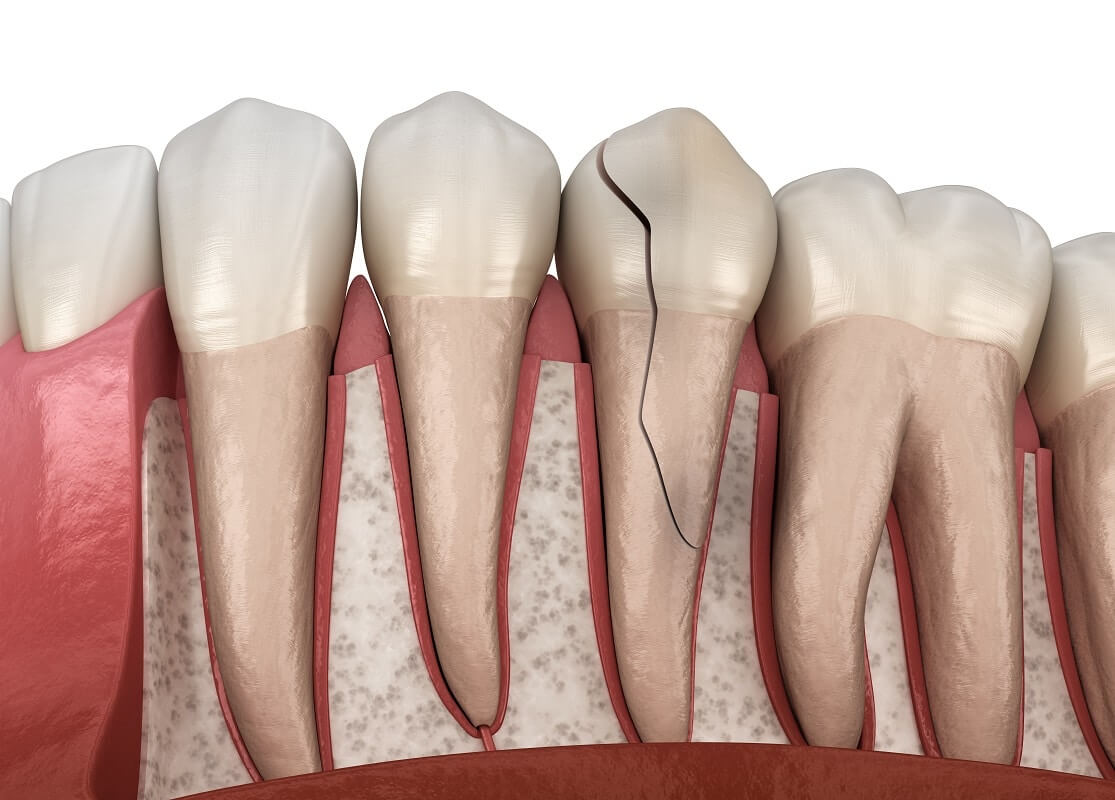My tooth is cracked, how should I proceed?
It may not be uncommon to crack a tooth, but it certainly hurts. Unfortunately, while our teeth are solidly built, they can crack if force beyond their limits is applied. This may be something as innocent as chewing hard foods or ice. More fortunately, a cracked tooth can be repaired.
In this article, we’ll look at the causes of a cracked tooth and how to treat various types of cracked teeth.
What Causes Teeth to Crack or Break?
While the enamel that covers your teeth is the strongest tissue in your body, it can still crack. Teeth can be broken in many ways, such as chewing on something hard or suffering a traumatic fall or blow.
Some foods that are common culprits for teeth damage include:
- Ice
- Hard candies
- Coffee
- Potato chips
- Dried fruit
- Soda
- Sports drinks
Your teeth can also become weak due to decay and cavities becoming more susceptible to cracking when chewing hard food as a result.
The most common symptoms of a cracked tooth include:
- Sensitivity to cold, heat, or sweetness
- Pain when biting or chewing
- Intermittent pain
- Gum swelling around the affected tooth
Types of Cracked Teeth
There are five major types of cracked teeth:
1. Craze lines
Craze lines are shallow, tiny cracks that only affect the outer enamel. They aren’t painful, but may look unsightly. Craze lines mainly affect adults.
2. Fractured Cusp
A fractured cusp occurs when a piece of your tooth’s chewing surface breaks off. This usually is not painful.
3. Cracked tooth
When a crack extends from your tooth’s chewing surface vertically toward the root, it’s referred to as a cracked tooth. Early treatment is paramount in this situation. Left untreated, the problem can worsen with time, and you may eventually lose the tooth.
4. Split tooth
A long-term cracked tooth often results in a split tooth. A split tooth features distinct parts that can be separated.
5. Vertical root fracture
A vertical root fracture involves cracks that start from the tooth’s root and extend toward the chewing surface. They are typically discovered when the surrounding tissues become infected as they often exhibit minimal signs and symptoms.
Repairing a Cracked Tooth
Treatment for a cracked or broken tooth depends largely on the severity of the damage. Here are some procedures that your dentist in Grande Prairie can recommend depending on how severely your tooth is cracked.
- Bonding : Bonding is the process of filling the cracked tooth with a plastic resin, restoring its look and function.
- Crowning : Crowning is the process of fitting a dental crown, a prosthetic device generally made of ceramic or porcelain, over the damaged tooth. The dental crowning process can take several weeks.
The dentist has to make an impression of your tooth and then send it off to a dental lab to custom-make the crown. A crown can last a lifetime if given proper care. - Root canal : In cases, a crack can be so extensive it extends into the pulp. In this instance, your dentist may recommend a root canal to eliminate the damaged pulp and restore some of the tooth’s integrity. A root canal can avert tooth infection or further weakening.
- Extraction : Sometimes, the structure of the tooth, including the roots and nerves beneath it, can be severely damaged. In this case, removing the tooth could be the best option.
- Let the cracks be : Finally, if you only have tiny hairline cracks in the enamel of your teeth that aren’t causing any pain or affecting your looks, you can leave them alone.

